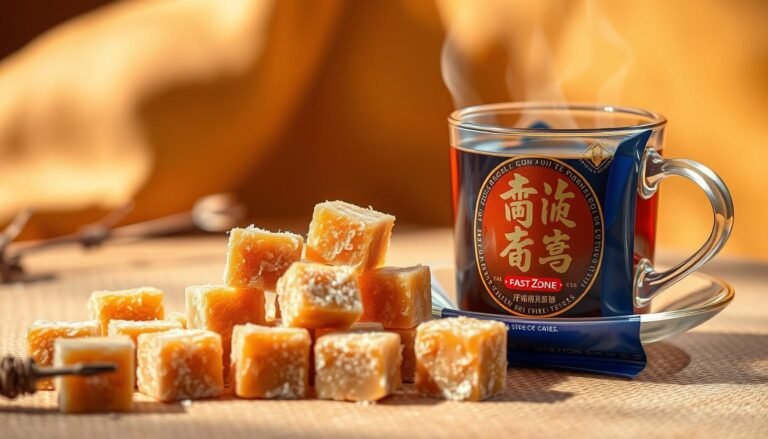Elevate Your Meals with These Captivating Types of Hot Sauce
Have you ever wondered what makes some hot sauces so irresistible, while others fall flat on your taste buds? The secret lies in the rich history and global diversity of these spicy condiments. There is a long story behind the SIANG JI ASIA SAUCE Types of Hot Sauce. They have evolved over centuries, reflecting unique flavors and cultural traditions. From the fiery habaneros of the Caribbean to the smoky chipotles of Mexico, these sauces can turn any dish into a culinary masterpiece.
Key Takeaways
- Discover the fascinating history and global origins of hot sauce
- Explore the diverse array of Types of Hot Sauce and their unique flavor profiles
- Learn how to elevate your meals with the perfect hot sauce pairings
- Understand the science behind the Scoville scale and pepper varieties
- Dive into the art of hot sauce production and unique ingredient combinations
Get ready for a spicy journey. We’re going to explore the thrilling world of Types of Hot Sauce. Learn how they can take your meals to the next level.
Types of Hot Sauce – The Spicy Journey: Exploring the Origins of Hot Sauce
The thrilling tale of hot sauce starts with the chili pepper. A native to the Americas, it was loved for its heat and health benefits by ancient people. Europeans’ arrival during the Columbian Exchange triggered the spread of chili peppers. This led to the creation of various types of hot sauce.
Tracing Roots from Ancient Civilizations
Hot sauce’s history can be linked to the Aztecs, Mayans, and Incas. These cultures deeply appreciated chili peppers for their taste and use in medicine. The Aztecs made xocolātl (hot chocolate), and the Incas used peppers in rituals. Their impact is clear in today’s hot sauce varieties.
The Columbian Exchange and Global Spread
The Columbian Exchange was key for chili peppers and hot sauce across the globe. European explorers like Christopher Columbus found the peppers in the Americas. They then shared them, starting a mix of flavors and culinary ways.
This led to new hot sauce varieties that combined local ingredients with chili peppers. It created a wide range of spicy sauces.
Cultural Adaptations: How Types of Hot Sauce Evolved
Chili peppers found their way into dishes worldwide, adapting to each culture. For example, African peri-peri sauce uses bird’s eye chilies. Meanwhile, Middle Eastern harissa includes smoked red peppers. This shows how versatile and loved chili peppers are globally.
Every region made their hot sauce varieties by mixing chilies with local tastes. This made a beautiful mix of sauce types that show diverse culinary traditions.

“The journey of hot sauce is a global adventure, with each culture leaving its indelible mark on these spicy condiments.”
Types of Hot Sauce – Measuring the Heat: The Scoville Scale and Pepper Varieties
The heat level in hot sauces matters a lot. The Scoville Scale is a way to measure this heat. It was created by Wilbur Scoville in the early 20th century. This scale tells us how hot peppers and sauces are in Scoville Heat Units (SHU).
Understanding Scoville Heat Units (SHU)
The Scoville Scale starts at 0 SHU for mild bell peppers. It goes up to over 2 million SHU for the Carolina Reaper. This wide range helps people who love hot sauce find the right level of heat. Knowing the SHU of different peppers lets us explore many types of hot sauce.
Pepper Varieties and Their Heat Levels
- Bell Pepper: 0 SHU (the mildest)
- Banana Pepper: 100-500 SHU
- Anaheim Pepper: 500-2,500 SHU
- Jalapeño Pepper: 2,500-8,000 SHU
- Serrano Pepper: 10,000-25,000 SHU
- Cayenne Pepper: 30,000-50,000 SHU
- Habanero Pepper: 100,000-350,000 SHU
- Ghost Pepper: 855,000-1,041,427 SHU
- Carolina Reaper: 1,400,000-2,200,000 SHU (the hottest)
Factors Influencing a Hot Sauce’s Heat Profile
Pepper type isn’t the only thing that makes a hot sauce hot. Using vinegar, salt, and other spices can change the heat. This mix of ingredients leads to many flavors and heat levels. It’s a fun way to discover types of hot sauce for great meals with just the right kick.

“Exploring the diverse world of types of hot sauce is an exciting culinary adventure for those seeking to elevate their meals with the perfect balance of flavor and heat.”
Elevate Your Meals with These Captivating Types of Hot Sauce: A Global Tour
Get ready for a true adventure in hot sauce from around the world. You’ll find tasty flavors and unique traditions. Experience the unforgettable North American hot sauces, the lively Latin American hot sauces, the fragrant Asian hot sauces, the daring African hot sauce traditions, and the elegant European hot sauce contributions. The variety of types of hot sauce will amaze you.
North American Hot Sauces
In Louisiana, the heart of North America, spicy sauces are a must-have. The Louisiana-style hot sauce uses cayenne peppers, vinegar, and salt. It’s known for its perfect mix of heat and flavor. This sauce is great on everything from Creole dishes to hot wings.
Latin American Hot Sauce Diversity
Traveling south, Latin America introduces a burst of flavor in hot sauces. Mexico has smoky chipotle sauces, while the Caribbean features spicy habanero sauces. These types of hot sauce showcase the region’s rich culinary history. You’re in for a treat with the varied and lively Latin American hot sauces.
Asian Fusion Hot Sauces
Heading east, Asia combines heat with complex tastes to dazzle the palate. The famous Sriracha combines chilies, garlic, and tangy elements. Discover a wide range of types of hot sauce that highlight Asia’s love for spicy foods. Each sauce brings something special to the table.
African Hot Sauce Traditions
In Africa, a diverse range of hot sauce traditions awaits. The peri peri sauce, made with bird’s eye chili, is known for its rich flavor and strong heat. These types of hot sauce not only spice up meals but also show Africa’s culinary diversity. It’s a journey filled with delightful and bold flavors.
European Hot Sauce Contributions
Europe might not be the first place you think of for hot sauce, but it offers some surprises. The piri piri sauce from Portugal is famous worldwide. It combines chilies, herbs, and tang for a unique taste. Discover the intriguing world of European hot sauces for a new twist on your favorite dishes.
No matter where you’re from, the hot sauce world has something for everyone. Take a world tour through hot sauces and find the flavors that speak to you. Let these hot sauces from around the globe add excitement and flavor to your meals.
The Art of Hot Sauce: Ingredients, Flavors, and Production Methods
Every exciting Types of Hot Sauce starts with a unique mix of ingredients. These ingredients add their special taste. They range from peppers’ heat to the sour bite of vinegar. What makes some hot sauces stand out are the unusual parts. These make the flavor journey truly different.
Essential Hot Sauce Ingredients
A standout Types of Hot Sauce begins with various peppers, like jalapeño or habanero. The pepper variety and amount control the spiciness and taste. Vinegar delivers a sour kick, while lemon juice brings freshness. Salt, garlic, and onions deepen the sauce’s flavor.
Unique and Unconventional Ingredients
- Smoked paprika: It brings a unique sweetness and earthiness to hot sauces.
- Exotic fruits: Fruits like mango and pineapple add a sweet, exotic touch.
- Bourbon or whiskey: They add a complex, caramel flavor to some hot sauces.
- Herbs and spices: Choices like cilantro and cumin can make hot sauces more flavorful.
Traditional Versus Modern Production Methods
The making of Types of Hot Sauce blends old and new. Traditional ways include fermenting to develop rich flavors over time. But now, modern approaches ensure safe and consistent sauces are always at hand. This blend lets people enjoy hot sauce in varied ways.
| Traditional Hot Sauce Production | Modern Hot Sauce Production |
|---|---|
| Fermentation: This method slowly makes a complex and flavorful hot sauce. | Controlled processing: Advanced methods produce safe and consistent hot sauces. |
| Artisanal approach: This means a smaller, handmade approach for unique flavors. | Scalable production: More people can enjoy hot sauce with efficient production. |
| Longer maturation process: This creates deeper, richer hot sauce flavors. | Faster turnaround: Quick production meets the fast demands of the market. |
Choosing between old-school methods or modern techniques is a personal choice. The joy of making hot sauce brings people together. It inspires individuals who love to create in the kitchen.
Conclusion
Hot sauces do more than spice up your food. They are full of health benefits and let you get creative. Many types of hot sauce are healthy. They are low in calories but high in vitamins and antioxidants. The heat in them, from capsaicin, might boost your metabolism and lower inflammation. This makes hot sauces good for you.
Hot sauces also add a lot in the kitchen. You can use them as a topping or mix them into your cooking. They can turn a simple meal into something special. Exploring types of hot sauce can be fun. Making your own lets you choose flavors you love.
Many people love collecting hot sauces. There are so many kinds to try. From special blends to foreign imports and unique one-time batches. For anyone, from beginners to true lovers of hot sauce, the joy of finding new flavors is endless. So, adding different types of hot sauce can really make your meals stand out.



